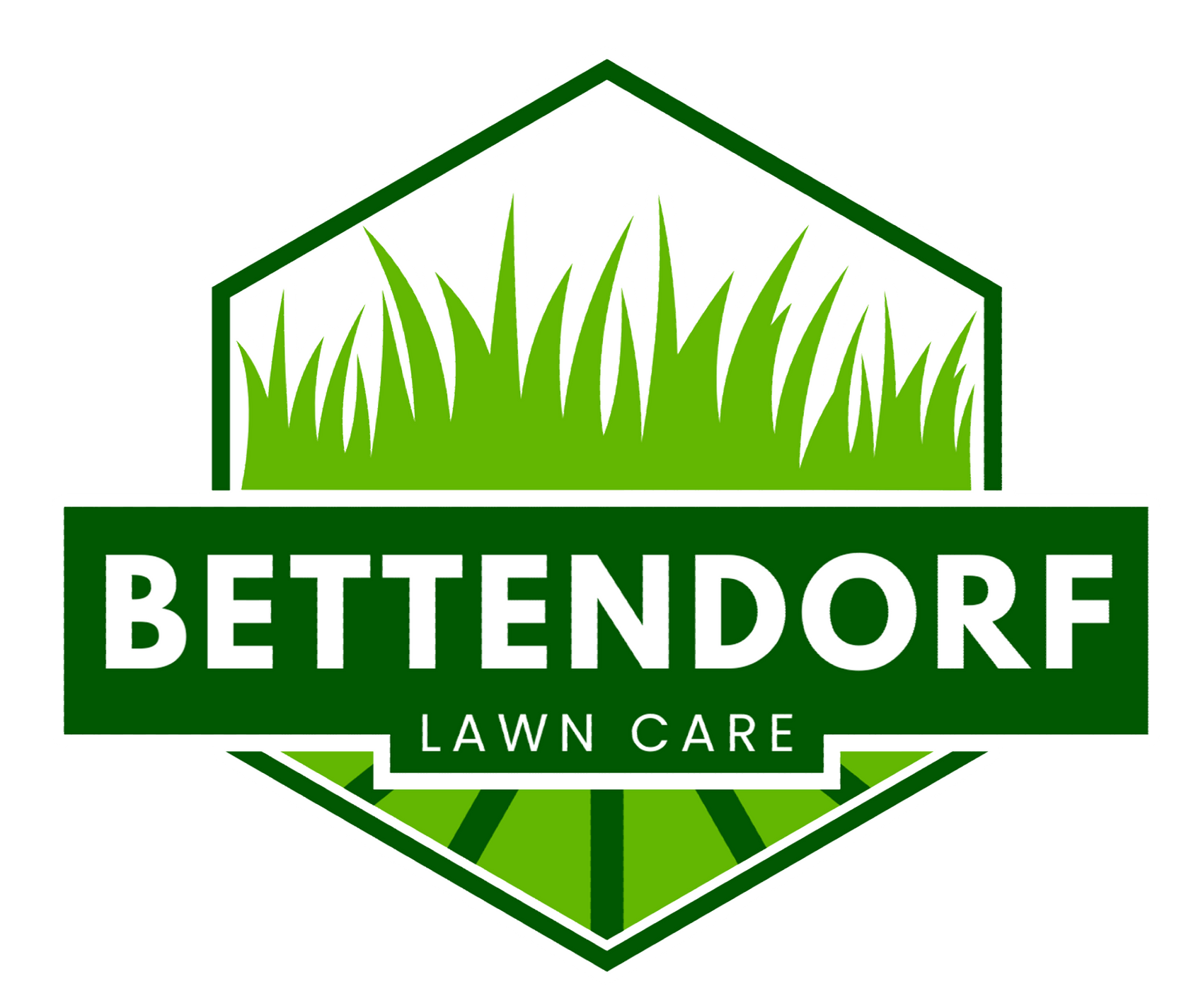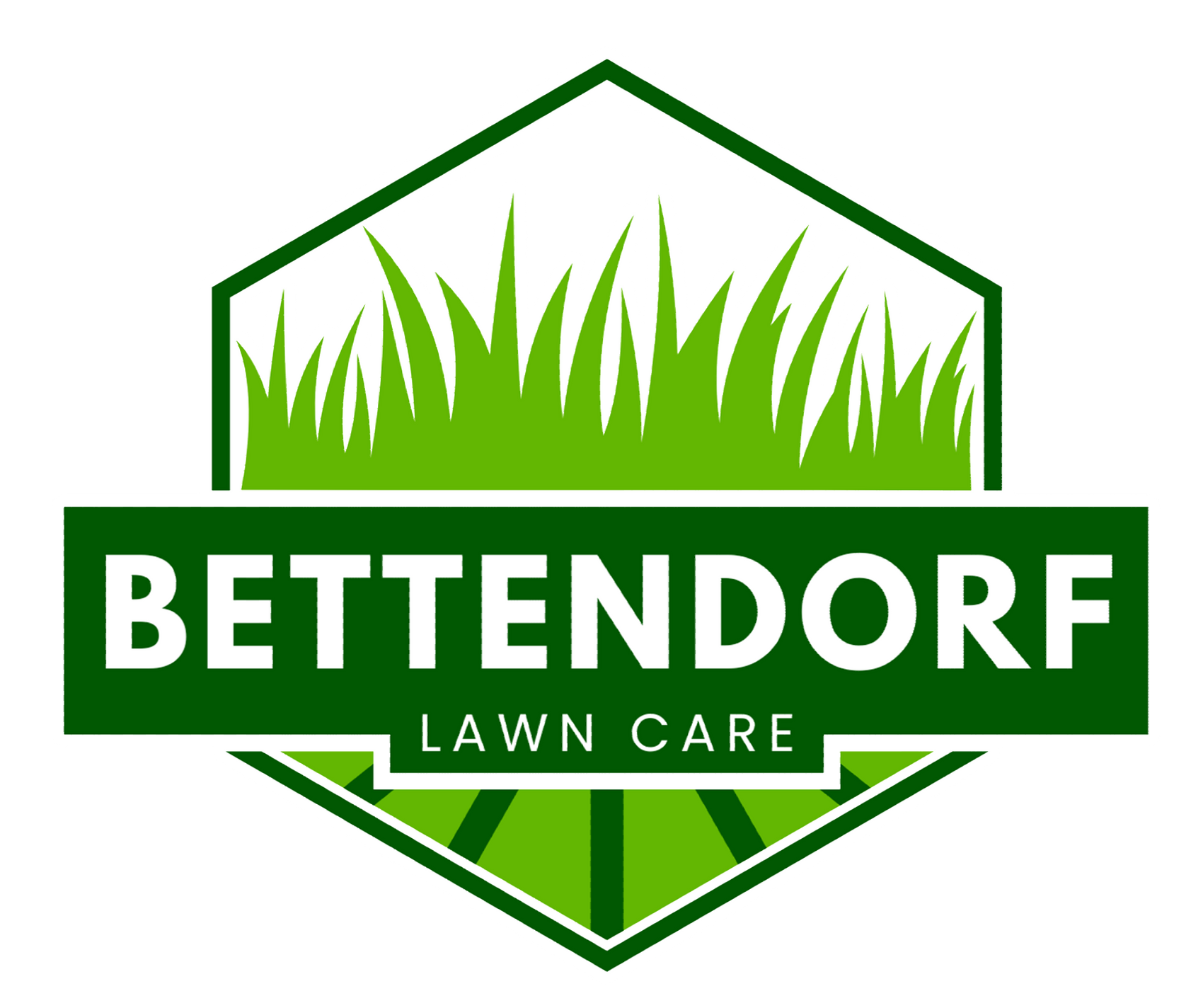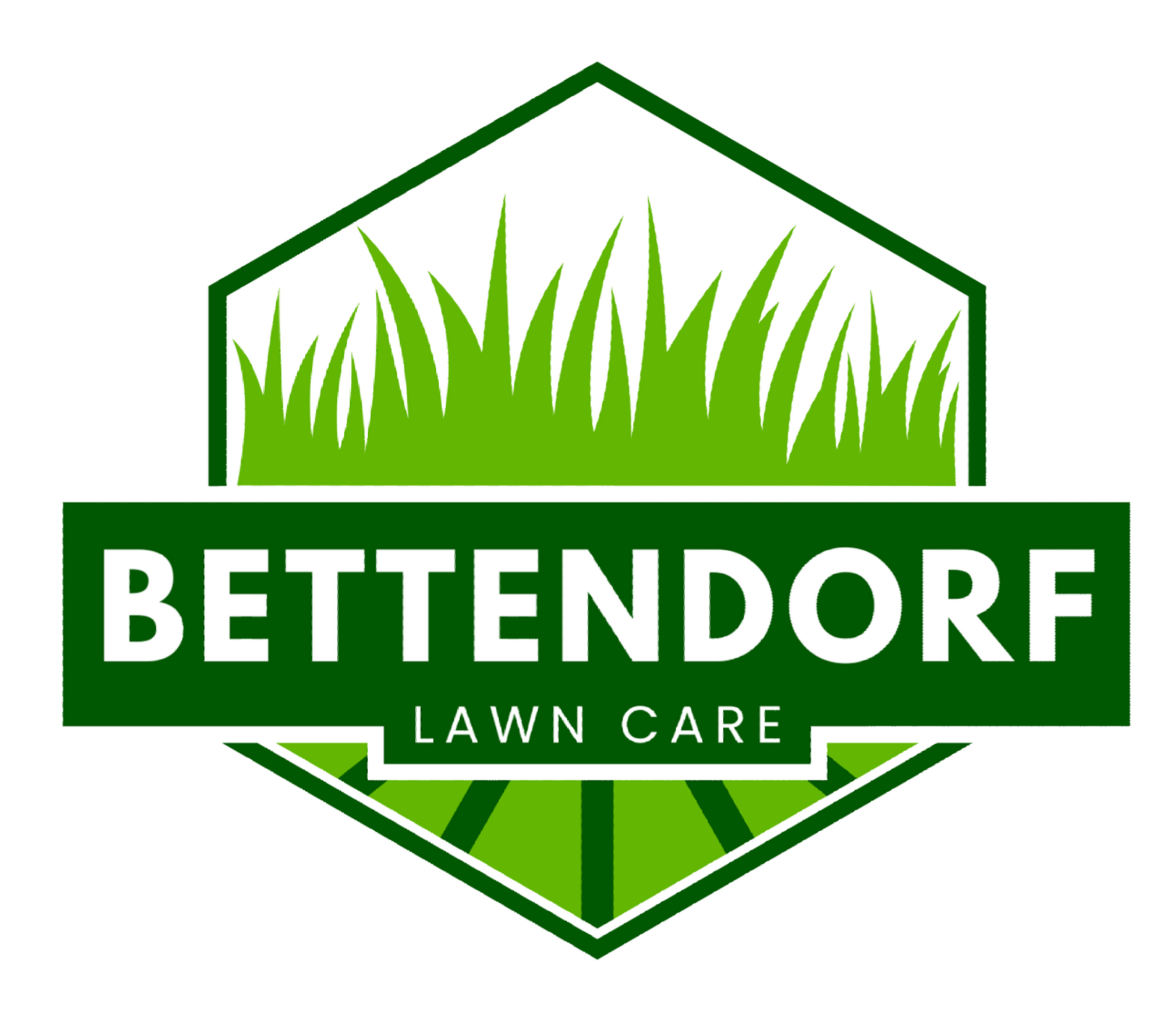Lawn Care Blog

Fall in Bettendorf brings beautiful colors — and a lot of leaves. While they may look nice at first, leaves can quickly pile up, suffocate your lawn, and turn into a soggy mess. That’s why BettendorfLawnCare.com offers a Weekly Leaf Maintenance Plan designed to keep your yard clean, healthy, and looking its best all season long. What Our Weekly Leaf Service Includes Every week, we visit your property and take care of the leaves so you don’t have to: Mulching leaves into the turf when appropriate (adds natural nutrients) Bagging & removal when leaf volume is heavy Blowing leaves off grass, patios, beds, and walkways Keeping your property clean and curb‑appealing all fall long You get consistent service and a spotless yard — no more weekend raking marathons. Why Weekly Leaf Maintenance Matters ✅ Protects Your Lawn Leaves left sitting too long block sunlight and trap moisture, causing: Mold & fungus Brown or dead patches Thin, unhealthy turf in the spring Regular removal keeps your lawn breathing and growing strong. ✅ Saves You Time & Energy Fall is busy enough. Weekly service means: No more raking or bagging No more leaf piles blowing back in More time for family, activities, and football Sundays ✅ Improves Curb Appeal A clean yard every week keeps your property looking sharp — especially important if you’re hosting holidays, selling a home, or just take pride in a tidy lawn. Mulch or Bag — You Choose Some weeks mulching is ideal, other weeks bagging is necessary. We make the best call each visit to protect and feed your lawn. At BettendorfLawnCare.com, we tailor service to your yard, weather conditions, and leaf volume. Why Homeowners Love Our Plan Simple automatic weekly scheduling No surprise leaf messes Healthier lawn heading into winter Peace of mind knowing it’s always handled Ready for a Cleaner Yard This Fall? Keep your weekends leaf‑free and your lawn looking its best. 📞 Call or text: (563-349-7734) 🌐 BettendorfLawnCare.com Sign up now and enjoy a clean, healthy lawn all season long! 🍂

When fall arrives in Bettendorf, Davenport, Moline, and Rock Island, the changing leaves create a beautiful backdrop. But once those leaves start piling up on your lawn, they can quickly become more than just a seasonal nuisance—they can harm the health of your yard. At Bettendorf Lawn Care, we specialize in professional leaf removal services in the Quad Cities. To learn how we can restore and maintain your property, check out our detailed Leaf Removal service page → Leaf Removal Services . The Importance of Leaf Removal Leaves may look harmless, but when they cover your lawn for too long, they: Block sunlight from reaching the grass, causing brown or dead patches. Trap moisture, creating the perfect environment for mold, fungus, and pests. Smother new growth, preventing your lawn from thriving in the spring. Regular cleanup not only improves curb appeal but also protects your yard from long-term damage. Benefits of Professional Leaf Removal While raking leaves on your own can be time-consuming, hiring a professional service like ours offers: ✅ Efficient cleanup with professional equipment ✅ Thorough results, including hard-to-reach areas like garden beds and fence lines ✅ Safety and convenience, saving you hours of heavy yard work Serving Bettendorf & the Quad Cities Our leaf removal services are available across: Bettendorf, IA Davenport, IA Whether you own a small residential property or manage a large commercial lot, we tailor our services to fit your needs. Get Started Don’t wait for leaves to pile up and damage your lawn. Contact us today or visit our Leaf Removal page to get a free quote and schedule your service.
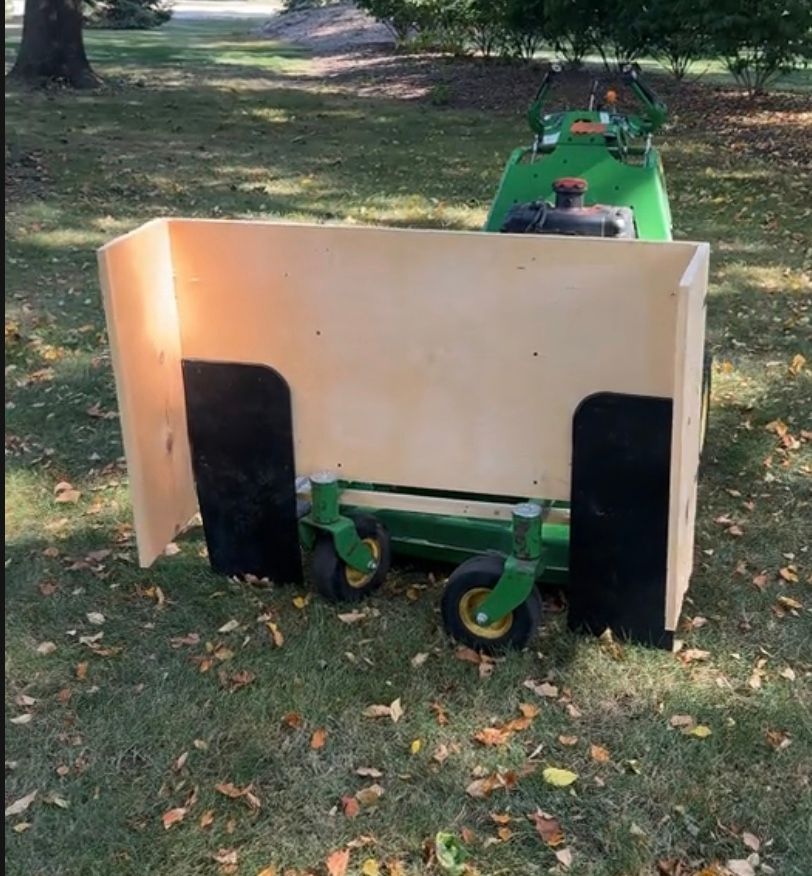
Fall in the Quad Cities is beautiful—but it comes with a lot of leaves. Bettendorf, Davenport, and surrounding areas are full of gorgeous trees that shed quickly, and homeowners know the struggle: leaves piling up can smother your lawn, create slippery walkways, and take hours to clean. That’s why I built my own DIY leaf plow for the John Deere W36M walk-behind mower. This custom-built tool is designed to make leaf cleanup faster, safer, and more efficient, and it’s already turning heads in the Quad Cities lawn care community. Why a DIY Leaf Plow? 1. Efficiency: Traditional leaf blowers or rakes take time and energy, especially on larger properties. My DIY plow allows me to clear large piles of leaves quickly, saving hours on every job. 2. Protects Your Lawn: Unlike heavy commercial equipment that can damage grass, my plow is built for walk-behind use, gliding smoothly over the lawn without tearing up the turf. 3. Eco-Friendly: Using this plow reduces the need for gas-powered blowers and minimizes leaf waste by allowing for organized collection, which can later be composted. 4. Cost-Effective: Building my own plow means I didn’t need to buy an expensive commercial attachment—proof that smart DIY solutions can save money and improve results. Perfect for Quad Cities Fall Cleanups Leaf season in Bettendorf, Davenport, and the surrounding Quad Cities area can be relentless. With my DIY plow, Bettendorf Lawn Care can: Speed up residential leaf removal Prevent leaves from damaging your lawn over winter Handle even large yards efficiently Check out the plow in action on TikTok: Watch it here! DIY Inspiration Meets Professional Lawn Care Even though this plow started as a DIY project, it’s now an essential tool for professional leaf cleanups in the Quad Cities. Homeowners can see the difference: cleaner yards, faster service, and a lawn ready for winter. If you’re struggling with leaf season or just want to see a creative lawn care solution in action, our team is ready to help. From residential leaf cleanups to full-season lawn care, Bettendorf Lawn Care is committed to keeping Quad Cities lawns healthy and beautiful. Learn more about our Quad Cities leaf cleanup services at BettendorfLawnCare.com . #LeafPlowDIY #LeafCleanup #LawnCare #DIYPlow #QuadCitiesLawnCare #JohnDeere #FallLawnCare

Welcome to Bettendorf Lawn Care, your trusted local experts for professional fall clean-up and leaf removal in Bettendorf, IA, Davenport, IA, and the Quad Cities area. As the leaves begin to turn and fall blankets your yard, its time to prepare your lawn for the winter ahead. Our comprehensive fall clean-up services ensure your property stays pristine, healthy, and ready to thrive come spring. Dont let fallen leaves smother your grass—let us handle the hassle with our efficient, eco-friendly leaf removal solutions tailored for Quad Cities residents. Why Choose Fall Clean-Up and Leaf Removal from Bettendorf Lawn Care? Fall is a beautiful season in Iowa, but the accumulation of leaves can lead to serious lawn issues like mold, pests, and patchy grass growth. Our leaf removal services in Bettendorf, IA, Davenport, IA, and the Quad Cities area prevent these problems while enhancing your curb appeal. Here is why homeowners and businesses in the area rely on us: ● Prevent Lawn Damage: Leaves left on the ground can block sunlight and trap moisture, leading to dead spots and fungal diseases. Our timely fall clean-up keeps your turf healthy. ● Save Time and Effort: Raking and bagging leaves is back-breaking work. Our team uses professional-grade equipment for fast, thorough leaf removal, giving you more time to enjoy the fall festivities. ● Eco-Friendly Disposal: We mulch or compost leaves whenever possible, reducing waste and returning nutrients to the soil. For larger jobs, we haul away debris responsibly. ● Customized Services: Whether you have a small residential yard in Bettendorf or a commercial property in Davenport, we scale our fall clean-up to fit your needs. ● Affordable Pricing: Competitive rates with no hidden fees—get a free quote for leaf removal in Bettendorf, IA, Davenport, IA, and the Quad Cities area today. With years of experience serving the Quad Cities, Bettendorf Lawn Care is committed to delivering top-notch results that exceed expectations. Our Fall Clean-Up Process: Efficient and Thorough At Bettendorf Lawn Care, we follow a proven process to make your fall clean-up seamless and effective. Here is what you can expect from our leaf removal services: 1. Initial Assessment: We visit your property in Bettendorf, IA, Davenport, IA, or the Quad Cities area to evaluate the scope, including leaf volume, yard size, and any additional needs like gutter cleaning or debris removal. 2. Leaf Collection: Using blowers, rakes, and vacuums, we gather leaves from lawns, flower beds, driveways, and sidewalks without damaging your landscaping. 3. Debris Removal: Beyond leaves, we clear twigs, acorns, and other fall debris to leave your yard spotless. 4. Mulching and Composting: Where beneficial, we mulch leaves on-site to nourish your soil, or we bag and remove them for off-site disposal. 5. Final Inspection: We walk the property with you to ensure complete satisfaction before we leave. Our team is fully insured, trained, and equipped to handle any size job, from one-time clean-ups to scheduled seasonal maintenance. Serving Bettendorf, IA, Davenport, IA, and the Quad Cities Area with Pride Bettendorf Lawn Care is proud to be a locally owned business dedicated to the communities of Bettendorf, IA, Davenport, IA, and the Quad Cities area. We understand the unique challenges of Iowa's fall weather, from heavy leaf drop to early frosts, and were here to help. Our service area covers residential neighborhoods, commercial properties, and everything in between in these vibrant Quad Cities communities. Looking for "leaf removal near me" in Bettendorf? Or professional fall clean-up in Davenport or the Quad Cities area? We got you covered. Our reliable team arrives on time, works efficiently, and leaves your property looking its best. Ready for a Leaf-Free Fall? Contact Us Today! Don't wait until the leaves pile up—schedule your fall clean-up and leaf removal service with Bettendorf Lawn Care now. Call us at (563) 349 7734 or fill out our online form for a free, no- obligation estimate. We here here to make your autumn easier and your lawn healthier in B ettendorf, IA, Davenport, IA, and the Q uad Cities area. Want to Learn More? Check out our podcast, Beyond the Rake: Why Fall Leaf Cleanup Is Crucial for Your Iowa Yard , where we dive deeper into the benefits of fall leaf cleanup and share expert tips to keep your lawn healthy all season long:
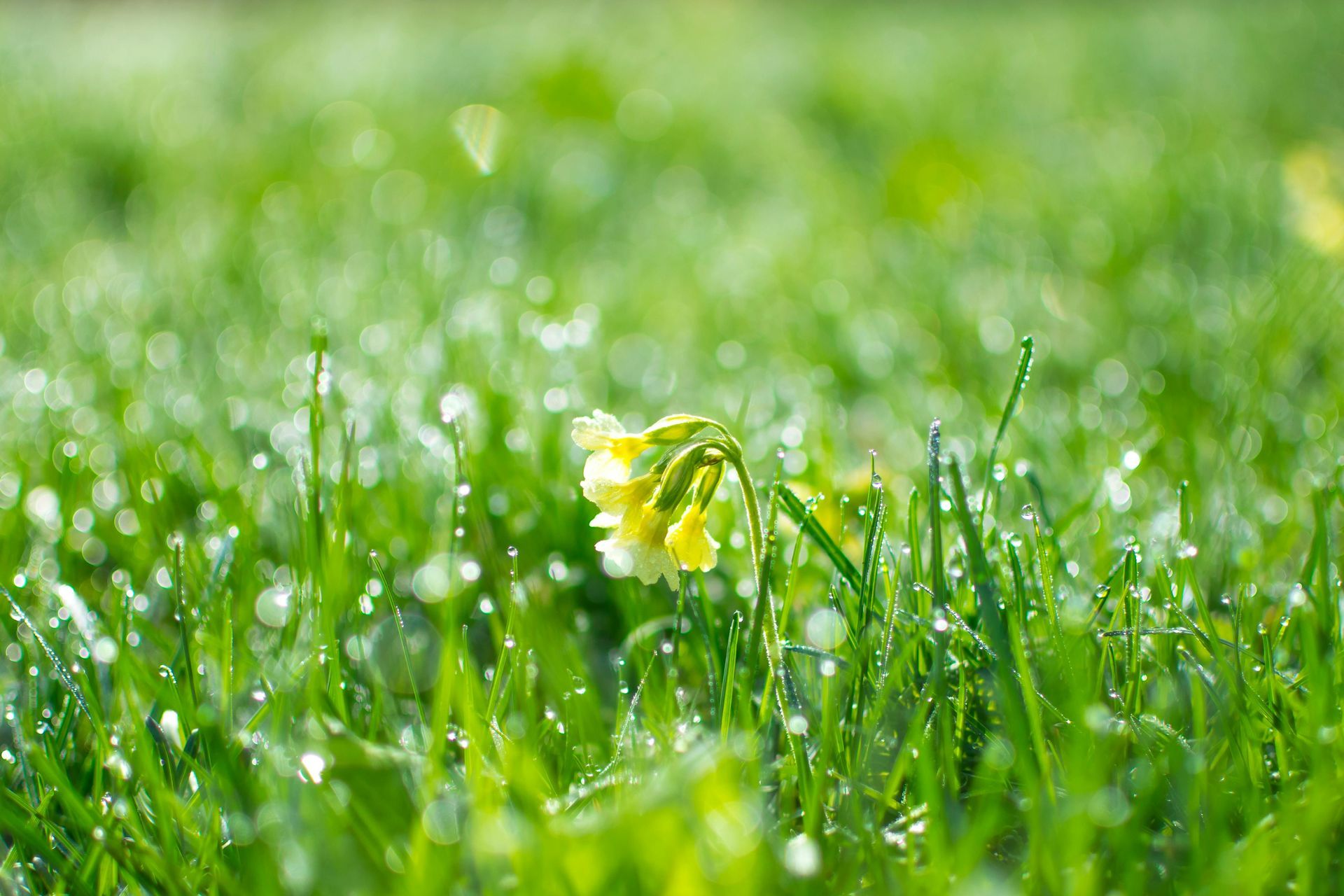
Spring is the perfect time to rejuvenate your lawn and set the stage for a lush, green yard all season long. As winter fades and temperatures rise, your grass starts to wake up, making it the ideal time for essential lawn care tasks. Follow these steps to ensure your lawn is healthy, vibrant, and well-prepared for the months ahead. 1. Clean Up Your Lawn Winter can leave behind debris such as leaves, twigs, and dead grass that can smother new growth. Start by raking your lawn thoroughly to remove any buildup and allow fresh air to reach the soil. This also helps prevent mold and disease from developing. 2. Test and Improve Soil Quality Healthy soil is the foundation of a thriving lawn. Test your soil’s pH levels to determine if any amendments are needed. Most grasses prefer a slightly acidic to neutral pH (between 6.0 and 7.0). If necessary, add lime to raise the pH or sulfur to lower it. Consider aerating your lawn to improve water absorption and root development. 3. Overseed Bare Patches If your lawn has thin or bare spots, early spring is a great time for overseeding. Choose a grass seed variety that matches your existing lawn and spread it evenly over problem areas. Keep the soil moist to encourage germination and early growth. 4. Apply Fertilizer and Weed Control A balanced fertilizer will help strengthen your grass as it comes out of dormancy. Look for a slow-release formula that provides nutrients over time. At the same time, apply a pre-emergent herbicide to prevent weeds like crabgrass from taking hold. Be sure to follow label instructions to avoid harming new seedlings. 5. Mow Correctly Once your grass starts growing, begin mowing at the appropriate height for your grass type. Avoid cutting more than one-third of the blade length at a time to prevent stress on the grass. Keep mower blades sharp for clean cuts that reduce the risk of disease. 6. Water Wisely Spring rains often provide enough moisture for your lawn, but if dry spells occur, water deeply and infrequently rather than shallow and frequently. Aim for about an inch of water per week, either from rainfall or irrigation, to encourage deep root growth. 7. Control Pests and Diseases As temperatures rise, keep an eye out for signs of pests and lawn diseases. Early detection and treatment can prevent small problems from turning into major issues. Using natural pest control methods or targeted treatments can help maintain a healthy lawn without harming beneficial organisms. By following these spring lawn care tips, you’ll give your yard the best chance to thrive throughout the year. Investing time and effort now will pay off with a beautiful, resilient lawn that you can enjoy all season long. Need professional help? Bettendorf Lawn Care is here for you! Based in the Quad Cities, we offer expert lawn care services tailored to your yard’s needs. Contact us today to keep your lawn looking its best!
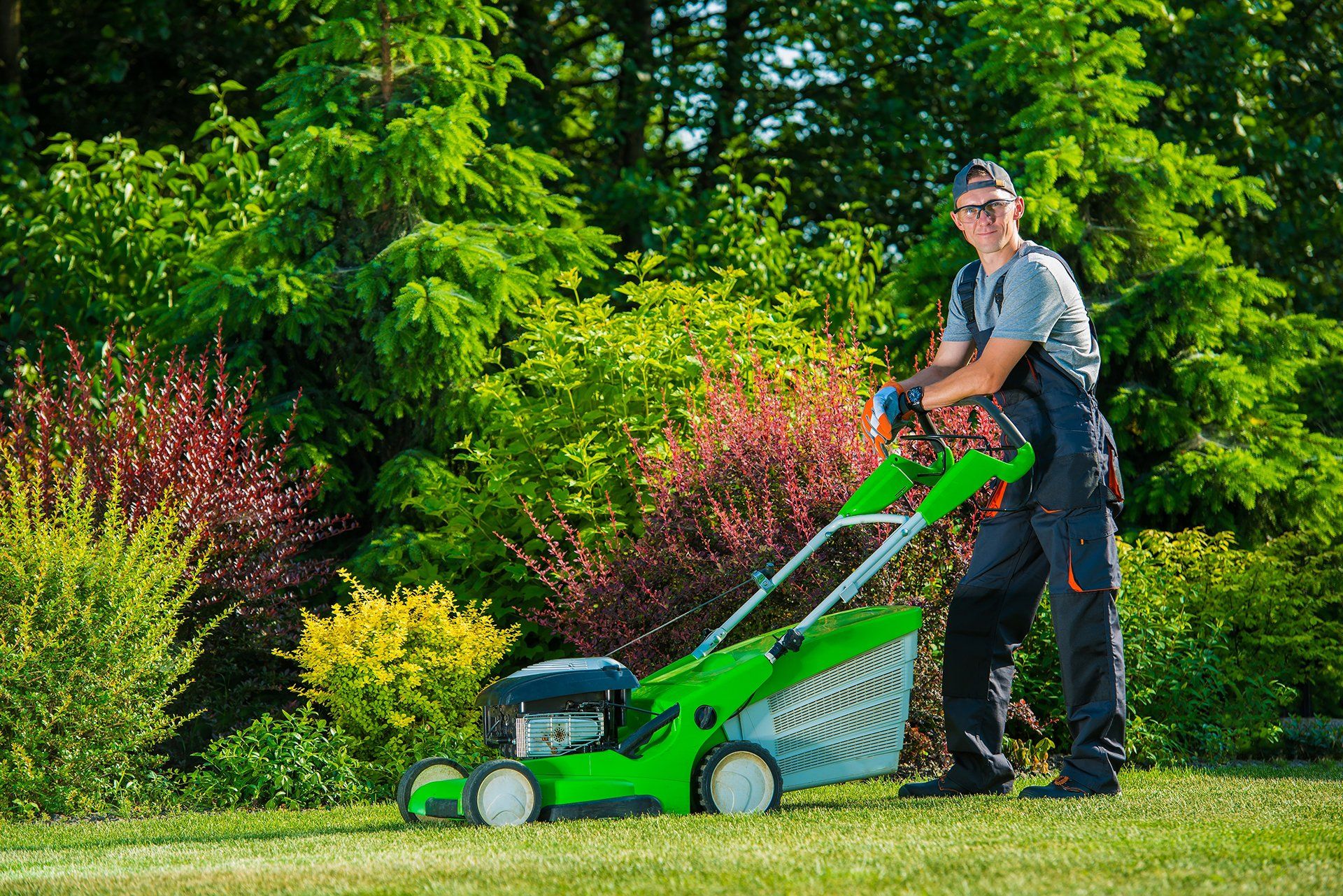
Spring is just around the corner in Davenport, Iowa, and that means it’s almost time to fire up your lawnmower and bring your lawn back to life. But when is the best time to start mowing again, and how can you ensure your winter-dormant lawn transitions smoothly into spring? Here are some tips and insights to help you make the most of your lawn care routine this year. Understanding Your Lawn’s Spring Growth Cycle In Iowa, the cool-season grasses commonly found in residential lawns, like Kentucky bluegrass, perennial ryegrass, and fescue, begin to grow actively when soil temperatures consistently reach 50°F. This typically happens in late March or early April, depending on the weather. The key to determining the right time to mow is patience. While it might be tempting to grab the mower on the first warm day, jumping the gun can harm your lawn. Instead, watch for these signs: Grass height: Wait until your grass reaches about 3-4 inches tall before the first mow. This ensures the roots have had a chance to establish and recover from dormancy. Firm soil: Make sure the ground is dry and firm. Walking or mowing on soggy soil can cause compaction and damage new growth. Healthy color: Look for a consistent green color across your lawn. This indicates that the grass is actively growing and ready for maintenance. Spring Mowing Tips for Winter-Dormant Lawns Once your lawn meets the conditions above, follow these tips for a healthy start to the mowing season: 1. Sharpen Your Mower Blades: Dull mower blades tear grass rather than cutting it cleanly, which can lead to stress and increased vulnerability to disease. Sharpen your blades before the first mow of the season. 2. Set the Right Mowing Height: For the first mow, set your mower blades higher than usual, around 3-3.5 inches. Gradually lower the height over the next few weeks to your preferred level. 3. Remove Debris: Clear away any leaves, sticks, or other debris that accumulated over the winter. This prevents obstructions during mowing and ensures an even cut. 4. Avoid Overwatering: Spring rains usually provide sufficient moisture. Avoid overwatering, as excess water can lead to disease and inhibit root growth. 5. Don’t Bag the Clippings: If your lawnmower has a mulching feature, leave the clippings on the lawn. They’ll decompose and return valuable nutrients to the soil. 6. Preparing for a Healthy Lawn All Year Long 7. Starting your lawn care routine off right in the spring sets the stage for a lush, green yard throughout the year. Consider these additional steps to boost your lawn’s health: 8. Aerate the Soil: If your lawn feels compacted, spring is a great time to aerate. This helps improve water, nutrient, and air flow to the roots. 9. Apply Fertilizer: Choose a balanced, slow-release fertilizer to give your grass the nutrients it needs to thrive during the growing season. 10. Control Weeds: Apply a pre-emergent herbicide in early spring to prevent common weeds like crabgrass from taking hold. Trust the Experts If you’re unsure about the best way to care for your lawn or don’t have the time, our team at Bettendorf Lawn Care, LLC is here to help! We provide expert lawn mowing and maintenance services tailored to the unique climate of Davenport, Iowa. From spring cleanups to year-round care, we’ve got your lawn covered. Get Ready for a Beautiful Spring Lawn By starting your mowing routine at the right time and following these tips, you’ll ensure your lawn bounces back from winter dormancy stronger than ever. Need a hand? Contact Bettendorf Lawn Care, LLC today to schedule your spring lawn care services. Let’s make your yard the envy of the neighborhood this season!
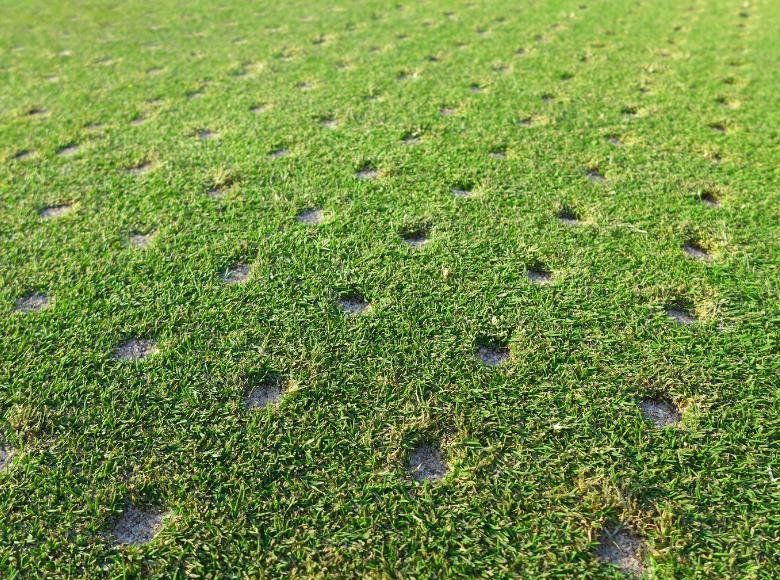
If you live in Bettendorf, Davenport, Rock Island, or Moline, you know how the Midwest winters can challenge your lawn. Aeration is one of the best-kept secrets for a thriving, healthy lawn year-round, especially before winter. Here’s why aerating is essential and how it can benefit your lawn when the cold weather rolls in. Why Aeration Matters for Winter Lawn Care Soil compaction is a common issue in areas with heavy foot traffic or clay-based soils, which are prevalent in many parts of the Quad Cities. Compacted soil makes it difficult for water, oxygen, and nutrients to penetrate down to the roots. Aeration, a process that removes small plugs of soil from the ground, helps to break up this compacted layer. This allows essential nutrients and water to reach the roots more easily, promoting stronger grass growth. Benefits of Aerating Your Lawn Before Winter Stronger Root System Aeration encourages deeper root growth by reducing soil compaction and allowing roots to access more oxygen and nutrients. Strong roots are vital for your grass to withstand the freezing temperatures and fluctuating moisture levels in winter. Better Water Absorption Compacted soil often leads to poor water drainage, which can cause flooding and ice patches when temperatures dip. Aeration helps improve soil drainage and prevents water from pooling on the surface. Improved Fertilizer Efficiency Applying fertilizer after aeration increases the absorption rate and effectiveness. Nutrients reach the root zone directly, boosting grass health and preparing it for the demands of winter. Reduces Thatch Build-Up Thatch is the layer of dead grass and organic matter that builds up on top of the soil. Too much thatch can suffocate the grass and create a breeding ground for pests and disease. Aeration helps break down thatch, allowing it to decompose and mix into the soil for healthier growth. Best Time to Aerate Your Quad Cities Lawn For the Quad Cities area, early to mid-fall is ideal for aeration. This timing gives your lawn a few months to establish stronger roots before the first hard freeze. Waiting until the ground is too cold can make aeration less effective and may even cause damage to the lawn. Tips for Aerating Your Lawn Choose the Right Equipment A core aerator is recommended for effective results, as it removes plugs of soil and thatch. Many local lawn care companies in Bettendorf, Davenport, Rock Island, and Moline offer aeration services or equipment rentals if you’re planning to DIY. Water Your Lawn Before Aeration Make sure your lawn is moist (but not soaked) before aeration. This will make it easier for the aerator to penetrate the soil and remove soil plugs effectively. Overlap Your Passes When aerating, it’s beneficial to make multiple passes over your lawn, especially if the soil is heavily compacted. Overlapping ensures that no areas are left untreated. Leave the Soil Plugs on the Lawn After aerating, let the soil plugs break down naturally over time. They will decompose and add valuable nutrients back into the lawn. Follow Up with Fall Fertilization For the best results, fertilize your lawn shortly after aerating. In the Quad Cities, late fall fertilization supports root health and prepares the grass for a quicker recovery in spring. Choose a fertilizer with high potassium content to enhance winter hardiness. Ready to Prepare Your Lawn for Winter? Aeration is a valuable step to ensure a resilient, healthy lawn all winter long. By investing in aeration now, you’ll enjoy a lush, green lawn that stands up to the harsh winter conditions and bounces back beautifully in spring. For expert help with aeration or other lawn care services in Bettendorf, Davenport, Rock Island, or Moline, consult with a trusted local lawn care provider today.
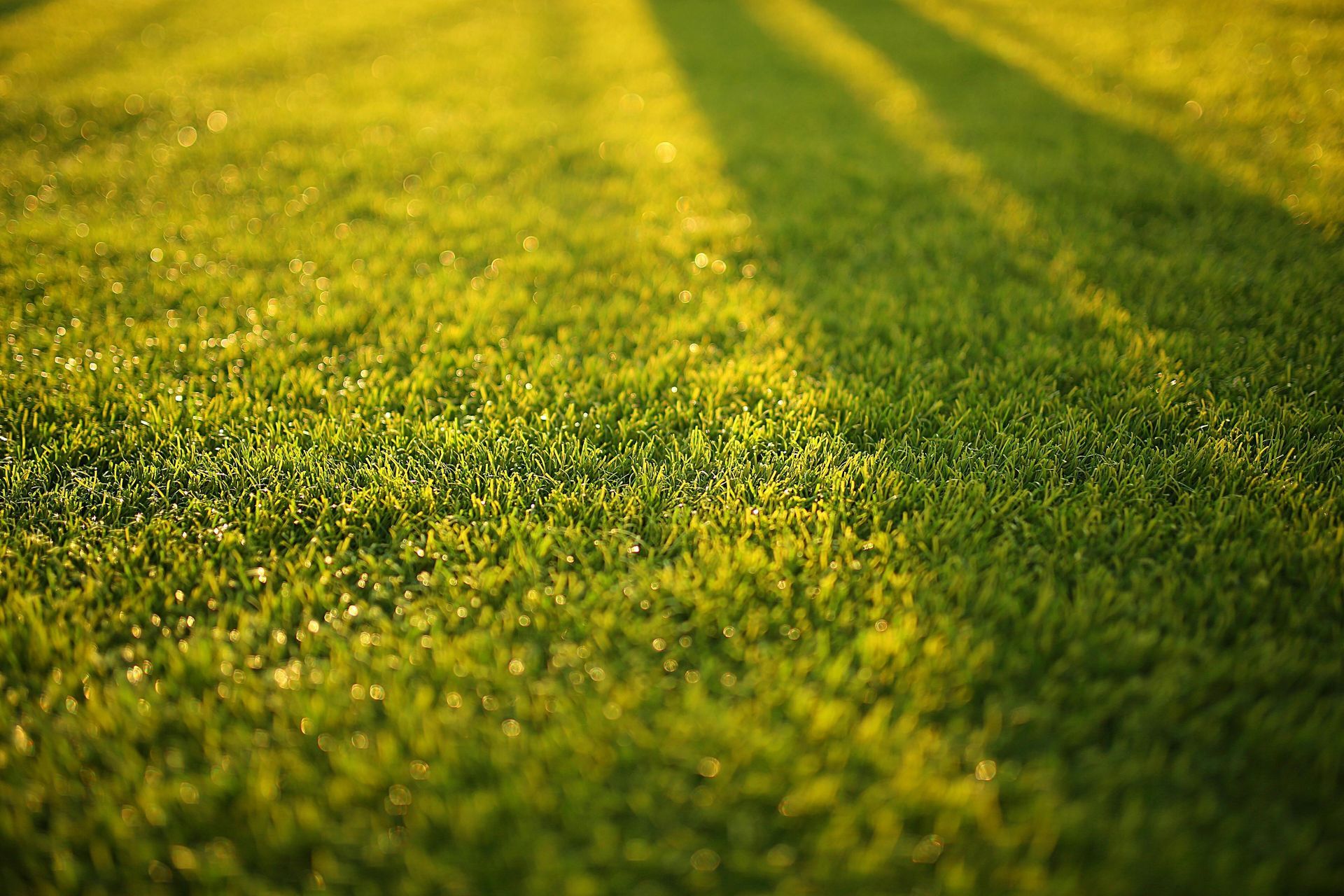
Winter can be harsh on lawns, especially in the Quad Cities area, which includes Bettendorf, Rock Island, Moline, and Davenport. With the right approach, though, you can keep your lawn healthy and green throughout the cold season and prepare it for a vibrant spring comeback. Here’s a winter lawn care guide specifically tailored for lawns in our region: 1. Aerate and Fertilize in Late Fall Aerating your lawn just before the first freeze helps break up compacted soil, allowing nutrients to reach the roots. Follow up with a winter fertilizer rich in potassium to strengthen your grass for the colder months. 2. Keep Your Lawn Clear In Bettendorf and across the Quad Cities, frequent snowfalls can cover lawns with layers of leaves, branches, and other debris. Clear away any debris before heavy snow arrives to prevent dead patches from forming underneath. 3. Avoid Excessive Foot Traffic Winter weather can make grass more brittle, so try to minimize walking across your lawn, especially when it’s frosty. This helps prevent damage to the grass blades, which can be challenging to repair come spring. 4. Mow a Little Shorter in the Late Fall A final mow at a slightly lower height helps prevent matting under snow. A good length for winter is around 2 inches, which protects the grass without leaving it vulnerable to winter disease. 5. Don’t Forget to Water if Needed While rain and snow help with hydration, occasionally dry winters can leave your lawn thirsty. If you notice a lack of moisture during warmer winter spells, consider watering your lawn, especially if temperatures stay above freezing. 6. Plan for Snow Removal Carefully In areas like Rock Island and Moline, where snowfall can be heavy, make sure your snow removal strategy avoids piling snow on your lawn. Excessive snow piles can create ice patches that damage the grass. By following these steps, you can give your lawn the resilience it needs to endure the winter. With care and attention, your Bettendorf, Davenport, Rock Island, or Moline lawn will emerge in the spring ready to thrive. For personalized winter lawn care tips or help preparing your lawn, reach out to a local lawn care professional in the Quad Cities area.
